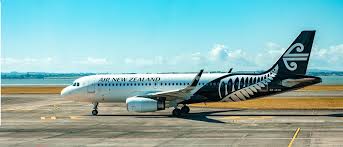If you’re an Australian planning to travel to India, then you’ll need to understand the process of applying for an Indian visa. In this article, we’ll cover everything from when and where to apply for a visa, to what kind of documents and information is required. We’ll also take a look at the best ports of exit when travelling to India from Australia. INDIAN VISA PORTS OF EXIT
Do I need an Indian Visa?
Assuming that you are not a citizen of India, you will need to apply for a visa before you can enter the country. The type of visa you will need depends on the purpose of your visit and how long you intend to stay in India.
If you are only planning to stay in India for a short period of time (up to 90 days), then you will need to apply for a tourist visa. If you are planning to stay in India for a longer period of time or if you plan to work or study during your stay, then you will need to apply for a different type of visa.
The best ports of exit when leaving India depend on your final destination. If you are flying directly to another country, then the best port of exit would be an airport. If you are taking a train or bus out of India, then the best port of exit would be a train station or bus station.
What are the steps to apply for an Indian Visa?
- Determine if you need a visa: If you are traveling to India for business, tourism, or medical purposes, you will need a visa.
- Gather the required documents: To apply for a visa, you will need a passport that is valid for at least six months from your date of travel, a recent passport-sized photograph, and proof of onward travel.
- Complete the online application: The first step in applying for an Indian visa is to complete the online application. Be sure to select the correct type of visa and enter all of the required information accurately. INDIAN VISA FOR AUSTRALIAN CITIZENS
- Pay the application fee: After completing the online application, you will need to pay the associated fee. Fees can be paid via credit card or bank transfer.
- Schedule an interview: Once your application is complete and payment has been made, you will need to schedule an interview at the nearest Indian consulate or embassy. During the interview, you will be asked questions about your travel plans and purpose for visiting India.
- Await approval: After your interview, your visa application will be processed and you will be notified of approval via email or letter. Your passport with visa will then be mailed to you directly.
How can I renew my Indian Visa before it expires?
If you are planning to travel to India, it is important to be aware of the visa requirements and regulations. Indian visas can be obtained from any Indian consulate or embassy, and they are typically valid for six months. If your visa is about to expire, you may be able to renew it by mail or in person at an Indian consulate.
To renew your visa by mail, you will need to submit a completed application form, a passport-sized photo, and a self-addressed envelope. You may also be required to submit additional documentation, such as proof of onward travel or a letter from your employer. Once your application is processed, your new visa will be mailed to you.
If you are renewing your visa in person at an Indian consulate, you will need to bring all of the same documents as listed above. In addition, you will need to provide your current passport and two copies of your itinerary. The process for renewing your visa in person is generally quicker than by mail, and you will receive your new visa on the spot.
What are the ports of exit for travelling to India?
There are three main ports of exit for travelling to India: Mumbai, Delhi, and Chennai. Each of these cities has its own unique set of visa requirements, so it’s important to research the specific requirements for your port of entry before applying for a visa.
Mumbai is the most popular port of entry for travellers to India, and is home to the country’s largest international airport. Visitors travelling to Mumbai will need to apply for a tourist visa, which can be obtained from their nearest Indian consulate or embassy. Delhi is another popular port of entry, and is served by two international airports. Travellers wishing to visit Delhi will need to apply for a business visa, which can be obtained from their nearest Indian consulate or embassy. Chennai is the third-most popular port of entry into India, and is served by one international airport. Travellers wishing to visit Chennai will need to apply for a business visa, which can be obtained from their nearest Indian consulate or embassy.
What is a tourist visa to India?
If you’re planning a trip to India, you’ll need to apply for a tourist visa. A tourist visa allows you to stay in India for up to six months. You can apply for a tourist visa at any Indian consulate or embassy. The best ports of exit for a tourist visa are Delhi, Mumbai, and Chennai.
Conclusion
Applying for an Indian visa can be a confusing process, but understanding when and how to apply is essential. We’ve provided you with an overview of the most common types of visas available for travelers entering India, as well as the best ports of exit from your home country. With this knowledge in hand, you’ll be able to confidently plan your next trip to India without worrying about getting stuck at the airport due to improper paperwork.
